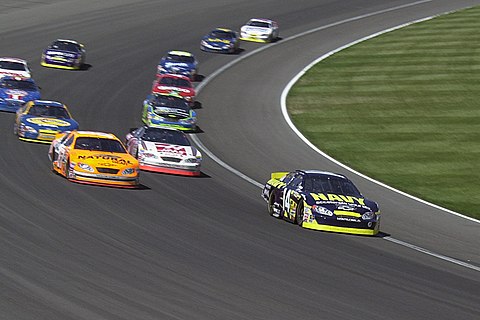Newton’s First Law of Motion, is also called as the Law of Inertia. Newton. This law states:
“A body at rest will remain at rest, and a body in motion will continue in motion with a constant velocity unless acted upon by a non zero net external force.”
Inertia is the property of the body due to which opposes the change in its state. Inertia of a body is measured by mass of the body.
Inertia – mass
Heavier the body greater is the force required to change its state and hence greater is inertia. The reverse is also true g lighter the body has less inertia.
Concepts of Newton’s First Law
1.Inertia
Inertia is the property of matter that resists changes in its state of motion or rest. Objects with greater mass have more inertia, meaning they require a larger force to change their motion or bring them to rest.
Example:
A cricket ball is harder to push than a tennis ball due to its greater inertia.
A moving train takes a longer distance to stop because of its large mass and inertia.
2. State of Rest and Uniform Motion
An object at rest will not start moving unless a force acts upon it.
Similarly, an object moving with uniform velocity will not change its speed or direction unless affeted by an external force.
3. Role of External Force
Forces such as friction, air resistance, or a push are examples of external forces that can interrupt an object’s natural state of rest or uniform motion. Without these forces, objects will continue their motion indefinitely.
Different types of Inertia :-
Inertia of rest :- it is the inability of a body to change its state of rest. E.g when we shake a branch of mango tree, the mango falls down.
Inertia of motion :- It is the inability of a body to change it state of uniform motion. E.g when a bus or a train stops suddenly, a passenger sitting inside it tends to fall forward.
Inertia of direction :- It is the inability of a body to change its direction of motion. E.g rotating wheels of vehicle throw out mud, mudguard over the wheel stop this mud.
Momentum :-
The total quantity of motion possessed by a moving body is known as the momentum of the body. It is the product of the mass and velocity of a body, e, p = mv
The concept of momentum was introduced by Newton to measure the quantitative effect of force.

Image of Newton’s First Law
1.Everyday Examples
Car Stops Suddenly: When a car comes to an abrupt stop, passengers tilted forward because their bodies tend to remain in motion even though the car has stopped. Seat belts help counteract this inertia and prevent injuries.
Stationary Object: A book on a table stays at rest until an external force applied on this.
Moving Object: A football rolling on a flat surface will eventually stop due to the force of friction acting opposite to its motion.
2. Astronomical Implications :-
In outer space, there is minimal friction or air resistance, celestial bodies like planets and satellites continue their motion indefinitely unless acted upon by gravitational forces or collisions.

Mathematical Representation :-
Newton’s First Law does not occupy a specific mathematical equation, it can be related to the concept of net force (F):
Fnet = 0 Object remains at rest or in uniform motion.
If the net external force acting on an object is zero, its velocity (v) remains constant. This implies no acceleration (a):
a = 0 if Fnet = 0.
Importance of Newton’s First Law
1.Foundation of Dynamics
Newton’s First Law give the relationship between forces and motion. It establishes that force is not required to maintain motion but is necessary to change it.
2. Connection to the Other Laws
It sets the stage for Newton’s Second Law, which quantitatively describes how forces cause changes in motion.
It explains the conditions under which forces need to be applied to overcome inertia.
Main points :-
Newton’s First Law of Motion is a foundation of physics that explains why objects behave as they do when no forces act on them. It emphasises the natural tendency of matter to maintain its state. From everyday phenomena like sliding objects to the grand scale of planetary motion, this law provides the mechanics of the universe laws of motion and advancing scientific knowledge.
Newton’s First Law of Motion states that an object at rest remains at rest, and an object in motion continues in motion with a constant velocity unless acted upon by an external force. This law is also known as the Law of Inertia.
Inertia is the property of an object that resists changes in its state of motion or rest. Newton’s First Law is based on this concept, as it explains how objects maintain their motion or rest unless influenced by an external force.
A passenger is seated in a moving car. When the car stops suddenly, passenger tilt forward because of their body tend to continue in motion due to inertia, even though the car has stopped.
Newton’s First Law has establishes the conditions under which forces are required to change the motion or rest state of an object and introduces the concept of inertia.
Yes, it applies in space. a satellite in orbit around Earth continues moving indefinitely in the absence of significant external forces like air resistance.
Newton’s First Law explains the natural tendency of objects to resist changes in motion (inertia), whereas the Second Law provides a mathematical relationship between force, mass, and acceleration. The Third Law describes action-reaction force pairs. Each law addresses different aspects of motion.